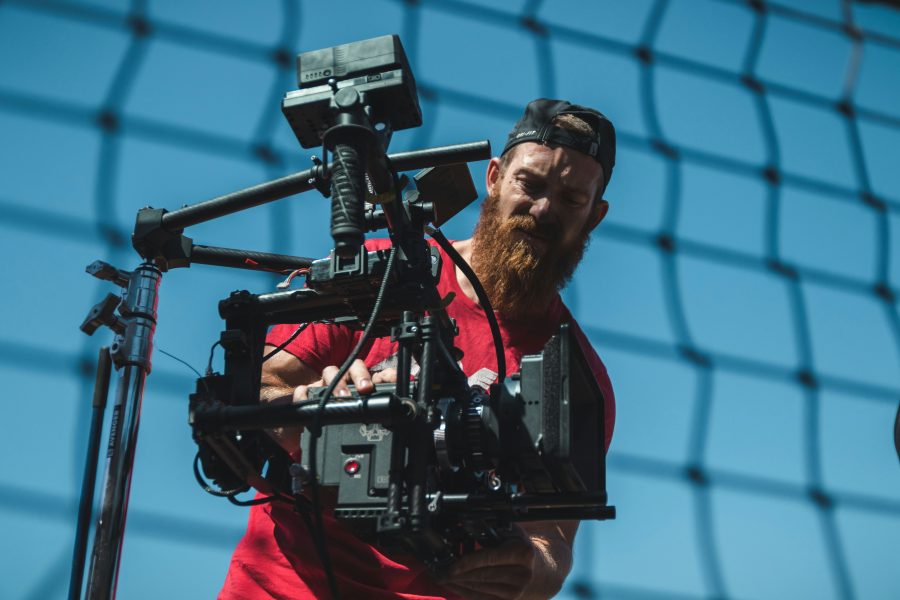During the past year, AI-generated video has gained widespread prominence and coverage in the news — both positive and negative. Amidst concerns that AI video creation tools will negatively impact jobs in entertainment and advertising, an increasing contingent of creators are recognizing AI’s potential to improve video production workflows.
I recently had the opportunity to speak with Alon Yaar, VP of product at Lightricks. Yaar’s team has been developing the LTX Studio web app, which offers a powerful generative AI text-to-video engine that comes integrated with tools conceived to address video professionals’ needs.
How AI Can Improve Video Production Workflows
During our conversation, Yaar highlighted some of the myriad ways that AI can enhance video production workflows to maximize the capabilities of human creators.
Ideation and Pitch Creation
“AI can be an incredibly useful tool during the ideation and pitch creation phase,” Yaar explains. “A filmmaker or creator can take a basic idea or a complete script and leverage the power of AI to offer a variety of concepts that they can then build from. It’s easy to adjust visual styles, characters and storyboard flows, so creatives can develop these concepts and then communicate them more compellingly and coherently.”
As part of the preproduction process, LTX Studio has the capability to automatically generate a pitch deck that includes a synopsis, mood-boards to showcase the project aesthetic and character profiles for the cast, as well as storyboards.
For ad production firms and movie studios, the ability to quickly produce multiple pitches can make it much easier to reach an agreement with a client regarding the direction of the project so actual production can begin.
Overcoming Budget Barriers
Budget restrictions are a common obstacle faced by media production studios. Large brands and studios can afford budgets in the hundreds of thousands to bring their vision to life with special effects, exotic sets and other attention-grabbing elements. Not so with projects that aren’t attached to proven sci-fi franchises.
As with shooting a feature film, the available budget directly impacts the viability of location shoots and animated effects.
According to Yaar, “Video project budgets are tight nowadays, even at bigger firms, so any boost in efficiency goes a long way. By using AI-assisted iteration of creative concepts up front, prototypes can be generated and communicated more quickly, and therefore, so can approvals.”
Frame-By-Frame Shot Refining
One common criticism of AI has been the “uncanny valley” effect, wherein viewers can identify that what they’re watching isn’t real due to unnatural or inconsistent character movements and models, missing frame details and other issues. However, with frame-by-frame shot refining available through tools like LTX Studio, such concerns are closer to becoming a thing of the past.
“While the creative process is iterative and experimental, at some point, creative professionals arrive at a specific and detailed vision of what they want to achieve, so it’s important for filmmakers to have total control of every shot,” Yaar explains. “Creators can define camera movements, can adjust the frame’s content, including inserting or erasing objects from the scene, and can even give characters more realistic facial expressions.”
This AI-assisted aspect of video production can also be combined with footage captured in real life, providing a quick and easy solution for removing background objects, adjusting lighting or framing and addressing other elements of video editing that are often tedious and time-consuming when performed manually.
Improved Collaboration
Video ads, music videos and other forms of video content often have several stakeholders involved in the creative process. In traditional video production, the process of editing a video, sending it to stakeholders for feedback and then applying that feedback can be extremely inefficient.
Lengthy email chains listing specific timestamps often get swamped in either too much or too little detail, resulting in multiple rounds of revisions. With LTX Studio, Yaar sees an opportunity to streamline the collaborative process.
“One feature that will expand as we update the platform is the ability for all stakeholders to have access to live edits, allowing the team to share ideas and refine the concept together in real-time,” he says. “We’re currently working on giving users the ability to add comments and suggestions as part of these real-time edits. Real-time collaboration combined with AI’s ability to rapidly generate updates in alignment with that feedback, helps everyone work more efficiently as they reach a consensus on what the video should look like.”
Revolutionizing Video Production
As Yaar’s insights reveal, AI in video storytelling isn’t necessarily designed to replace human talent. Rather, it is uniquely poised to help advertising agencies, media production studios and others have a broader range of tools that can help them in each stage of video production.
Whether AI is being used for creating pitches, incorporating fantastical elements in an ad or music video or helping to refine video footage on a frame-by-frame basis, this tech is poised to level the playing field.
The post How AI Promises to Influence Video Production Workflows appeared first on ReadWrite.






















